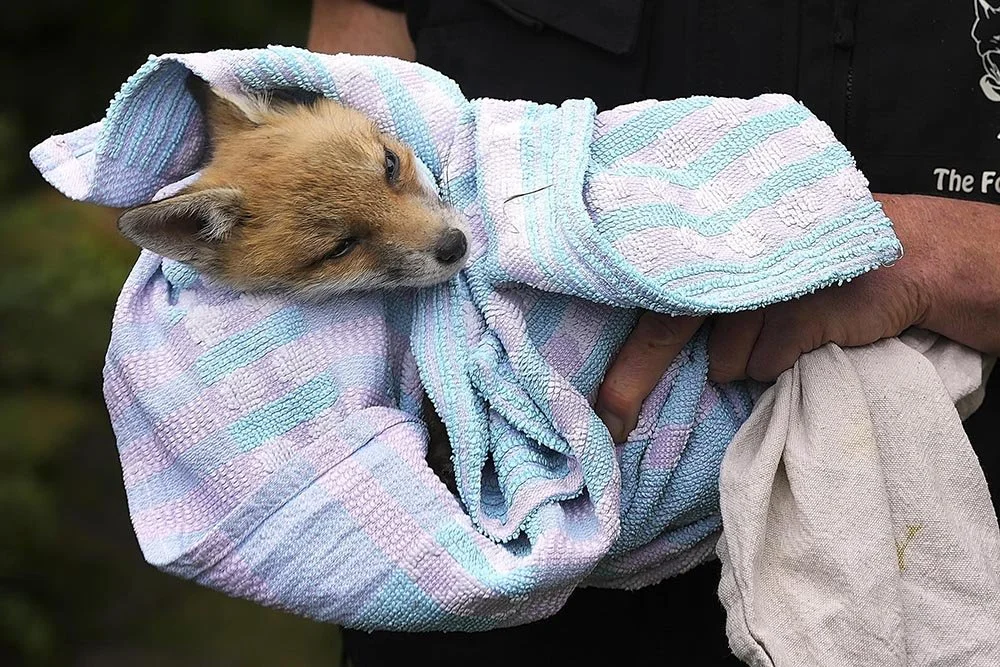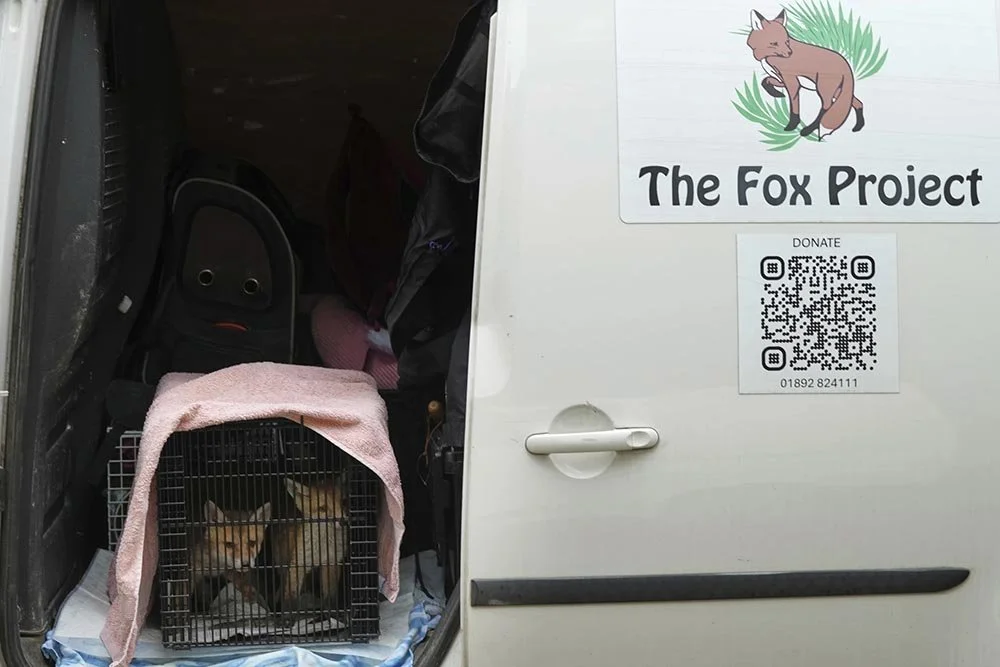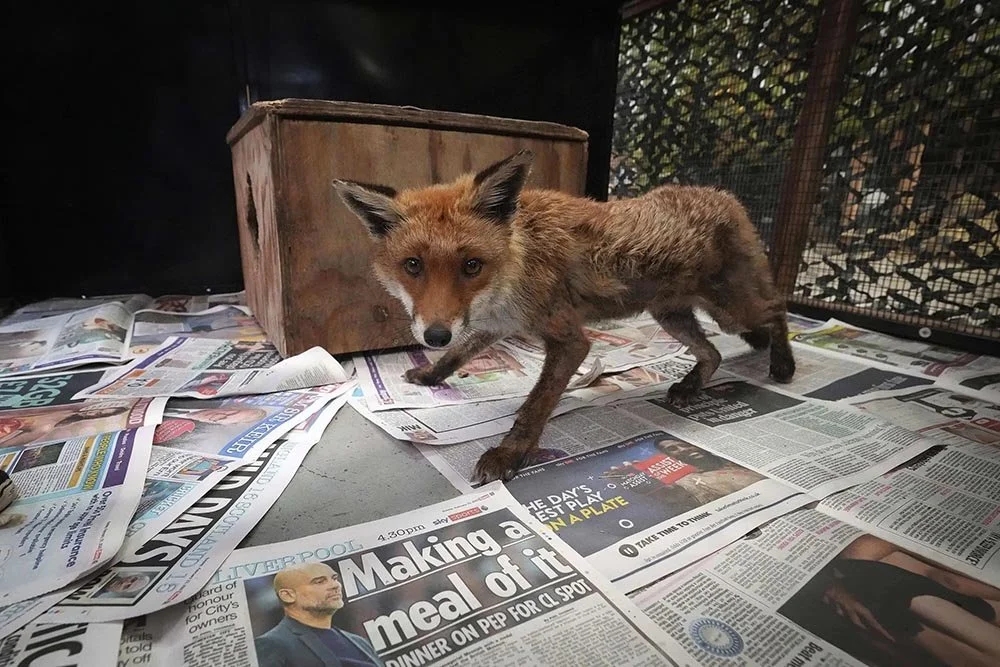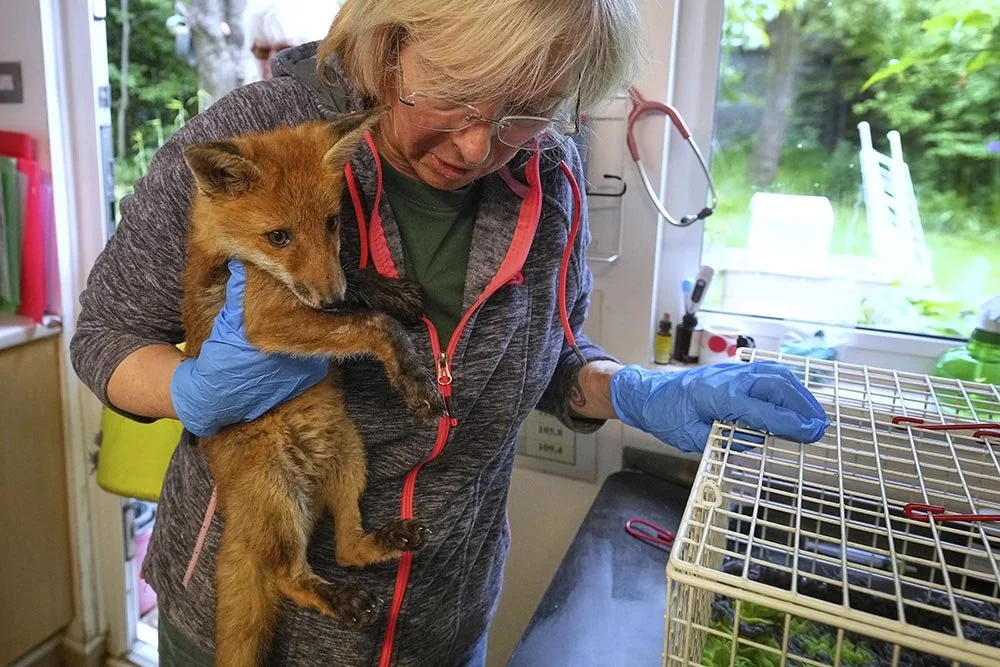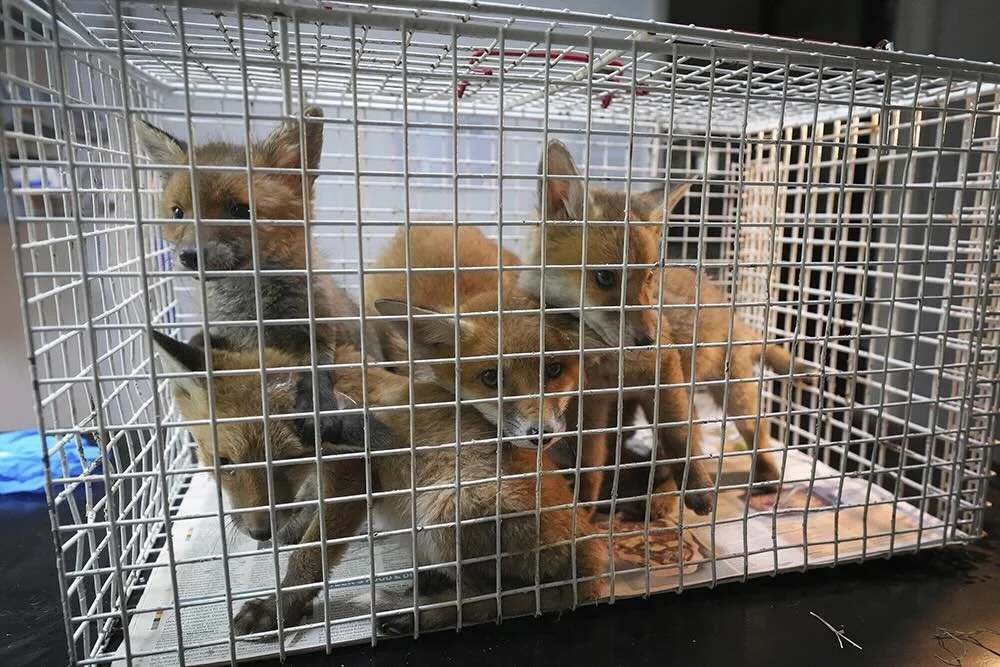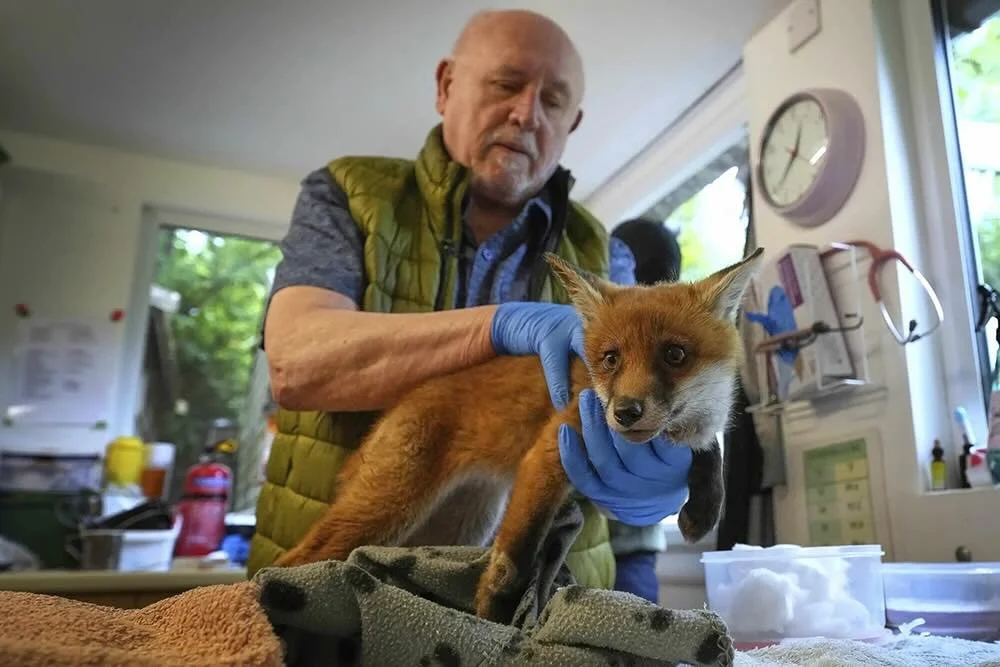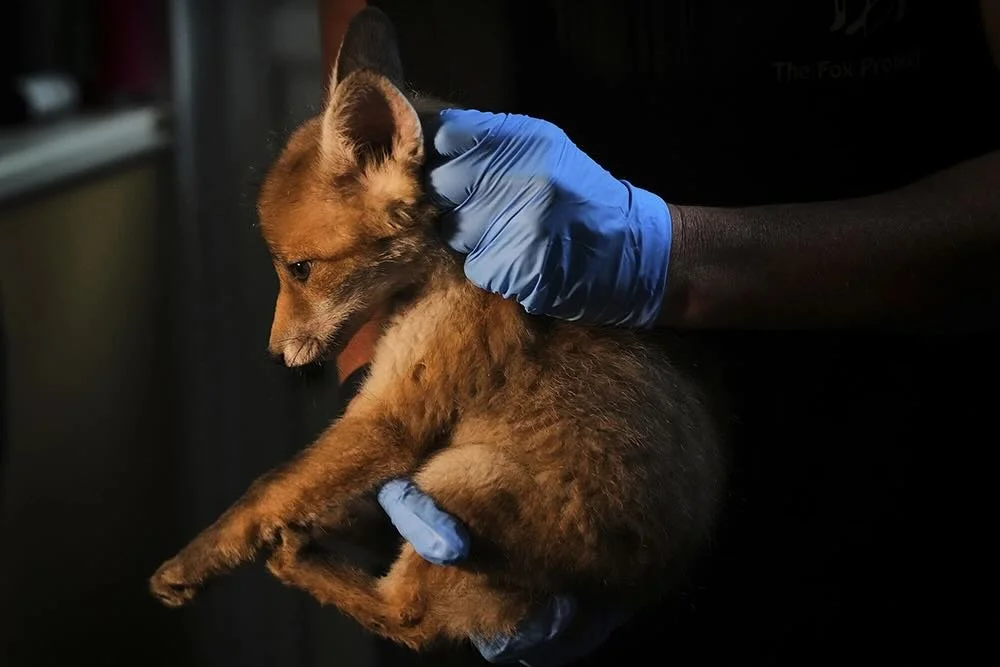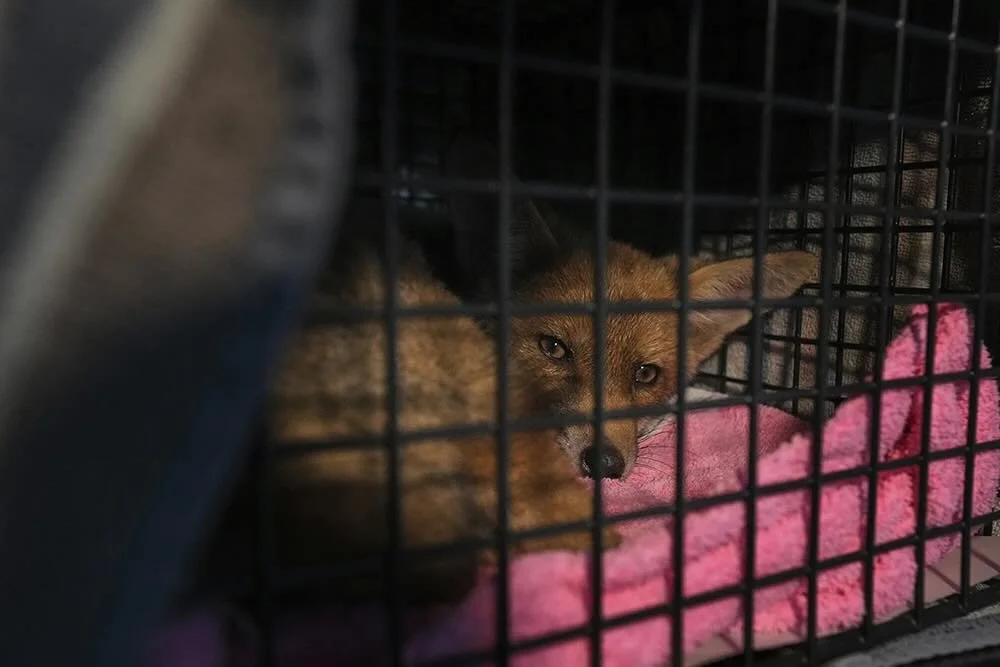LONDON’S FOX AMBULANCE SERVICE
What is The Fox Project?
How did foxes end up living in London?
Why do some people not like having foxes as neighbors?
What was Trevor Williams' job before he started The Fox Project?
What are the main dangers that city foxes face?
How many foxes does The Fox Project rescue each year?
What happened during Nicki's first rescue call?
How are baby foxes and adult foxes released differently?
What did the 2016 study discover about rescued foxes?
According to Nicki, why do foxes sometimes look back when they are released?
The Story
In London, England, something special happens when wild foxes get hurt or sick. Just like people can call an ambulance when they need help, foxes have their own rescue service too.
When someone finds an injured fox, they can call The Fox Project, and someone like Nicki Townsend will come to help.
Nicki works as a fox rescuer. Her job is to save foxes that are hurt, sick, or lost.
On one morning, she had to help an injured fox that was scared and angry. The fox was trapped in a cage, showing its teeth and making angry sounds. But Nicki was not afraid. She wore rubber gloves and carefully put a towel over the fox's head. Then she gently picked up the fox and moved it to a clean, safe cage.
"You can never predict what you're going to arrive at," Nicki said. This means she never knows what kind of situation she will find when someone calls for help.
Foxes in the City
Most people think of London as a big city with lots of buildings, cars, and people. They might not think about wild animals living there. But red foxes actually live all over London. You might see them walking down streets at night or resting in people's backyards during the day.
The foxes did not suddenly move to London.
Instead, as the city grew bigger over many years, it spread into areas where foxes already lived. This happened starting in the 1930s when London began to grow into the countryside. The foxes learned to live alongside people in this urban environment.
Today, scientists think there are about 15,000 foxes living in London. That's a lot of foxes for one city.
People Have Different Feelings About Foxes
Not everyone feels the same way about having foxes as neighbors. Some people love seeing foxes. They think it's exciting to watch a fox walk down their street in the evening or see one lying in the sunshine in their backyard.
But other people see foxes as pests. Foxes sometimes make messes by getting into garbage cans and spreading trash around. They also leave their droppings wherever they want. During winter, female foxes make very loud, scary sounds when they are looking for a mate. These sounds can wake people up at night.
Nicki explains that people's feelings about foxes are "like Marmite." Marmite is a food spread that some people love and others hate. There is no middle ground. The same is true with foxes.
How The Fox Project Started
The Fox Project began almost 35 years ago because of this divide between people who love foxes and people who hate them. A man named Trevor Williams started the organization.
Before Trevor worked with foxes, he was a bass guitar player in a rock band called Audience. His band was so good that they got to play concerts before famous bands like Led Zeppelin and Pink Floyd performed.
Trevor first became interested in protecting foxes when people in the countryside hunted them for sport. He wanted to stop fox hunting. Later, he decided to help city foxes too because many people were killing them in London.
Trevor noticed that people believed many untrue stories about foxes. Some people thought foxes would bite babies, eat pet cats, or cause other serious problems. These fears were not based on facts, but they made people want to get rid of foxes.
The Fox Project started by teaching people the truth about foxes and showing them safe ways to keep foxes away from their property if they did not want them around. Over time, the organization grew bigger and began rescuing injured foxes too.
The Rescue Work
Today, The Fox Project rescues about 1,400 foxes every year. About 400 of these are baby foxes called cubs. Sadly, only about half of all the rescued foxes survive and can be released back into the wild.
The Fox Project covers the southern part of London and the suburbs around it. Other animal rescue groups help foxes in other parts of the city.
Foxes face many dangers living in the city. In the wild, foxes eat small animals, insects, and berries. But city foxes often eat leftover food they find in garbage cans or food that people give them. This makes them depend more on humans for food.
The biggest dangers for city foxes are cars, soccer nets, and tight spaces. Many foxes get hit by cars while crossing streets. Others get tangled up in soccer nets at parks and playgrounds. Some foxes get stuck trying to squeeze through small openings in fences or buildings. When they try to get free, they often hurt themselves badly. These wounds can become infected if they are not treated.
Many city foxes also get a skin disease called mange. Mange is caused by tiny bugs called mites that live on the fox's skin. This makes the fox very itchy and can cause its fur to fall out.
A Day in Nicki's Life
Nicki drives a van called a VW Caddy through London's streets and highways. She also drives on narrow country roads that go through green hills outside the city. She responds to phone calls from people who have found hurt, sick, or orphaned foxes.
In the two and a half years since Nicki started this job, she has seen many different situations. Her very first rescue call taught her an important lesson. Someone called about an injured fox, but when Nicki arrived, the fox was not really hurt. As soon as she opened the cage, the fox ran away very fast.
"In my inexperience, I chased after him, which is comical because you're never going to outrun a fox," Nicki said. She learned that day that foxes are much faster than people.
Since then, Nicki has handled many challenging rescues. Once, she had to save a fox that got stuck upside down on top of a fence with its paw caught between wooden boards. Despite working with scared and sometimes angry foxes, she has only been bitten once.
The Hard Parts of the Job
Nicki's van always smells like foxes because she transports them to the rescue center. The smell gets worse when scared baby foxes go to the bathroom during the ride. Nicki is used to the smell, but she often opens the windows for fresh air.
Not every rescue has a happy ending. On one recent day, Nicki was called to help a baby fox that a couple found collapsed on their back lawn. The fox had a deep wound and was very sick.
"We thought he was asleep at first, so we went to go and have a close look because we love them," said Charlotte English, who found the fox. "Then he just didn't move, so we knew something was wrong."
That baby fox was too sick to save and had to be put to sleep. The adult fox that Nicki moved at the beginning of her shift that day also had to be put to sleep. This is one of the hardest parts of Nicki's job.
Recovery & Release
Baby foxes that recover from their injuries are kept together in groups of five. This helps them learn how to behave like wild foxes. When they grow up, they are released in countryside areas where they will be safer.
Adult foxes are released back in the same neighborhoods where they were found. This is because adult foxes know their territory and have the best chance of survival in familiar places.
Questions About Success
Scientists are not sure how well rescued foxes do after they are released. Most foxes are not tracked after they go free, so no one knows if they stay healthy and live good lives.
One study in 2016 found that rescued foxes might have more trouble than expected. The study showed that rescued foxes wandered farther from home than normal foxes. This could put them in more danger from cars and make their lives more stressful.
Dr. Bryony Tolhurst, who led this study, thinks people should not assume that all rescued foxes do well after being released. More research is needed to find out what really happens to them.
The Reward
Even though the work is hard and sometimes sad, Nicki finds joy in her job. She loves watching baby foxes take their first steps into the wild. She also enjoys seeing adult foxes run back into neighborhoods they recognize as home.
"Sometimes they look back and people like to romanticize that they're saying 'thank you,'" Nicki said. "They're just making sure we're not chasing after them."
For Nicki and Trevor, helping foxes is worth all the challenges. They believe every animal deserves a chance to live safely, even in a big city like London.
► COMPREHENSION QUESTIONS
— please answer with complete sentences
What is The Fox Project?
How did foxes end up living in London?
Why do some people not like having foxes as neighbors?
What was Trevor Williams' job before he started The Fox Project?
What are the main dangers that city foxes face?
How many foxes does The Fox Project rescue each year?
What happened during Nicki's first rescue call?
How are baby foxes and adult foxes released differently?
What did the 2016 study discover about rescued foxes?
According to Nicki, why do foxes sometimes look back when they are released?
► From EITHER/OR ► BOTH/AND
► FROM Right/Wrong ► Creative Combination
THESIS — Argue the case that wild animals in a city is a bad idea: they should be relocated or killed.
ANT-THESIS — Argue the case that wild animals in a city is a good idea: they should be left alone.
SYN-THESIS — Create a better solution, one that includes ideas from both the “bad” and “good” ideas at the same time.






